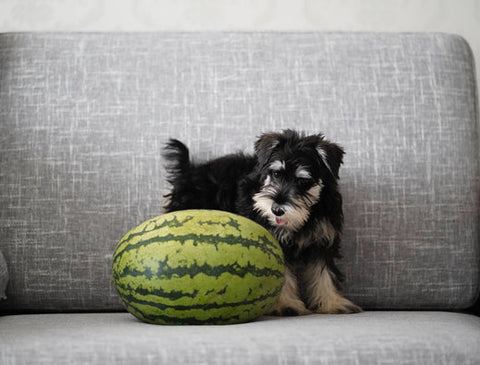
Why Hyperkeratosis Can Cause Crusty Paws

If you’re like most dog owners, you adore everything about your dog and would do anything to keep him or her healthy and happy. A pet is like another member of the family after all. So, when you notice your dog’s skin and feet looking unusual, you’re sure to get worried.
Your dog’s nose and foot pads seem hard and crusty and maybe even a little painful. It’s likely your dog is suffering from hyperkeratosis. Your dog’s hyperkeratosis can be worrisome and you don’t want it to get worse.
So, what’s causing this skin condition and how can you fix it? Read on to learn more about canine hyperkeratosis and what you can do to treat it.
What Is Canine Hyperkeratosis?
A dog’s body automatically produces a protein called keratin. This protein is actually useful in a dog’s body. It’s part of the outer layer of skin on a dog. The keratin protein works to hold skin cells together. It then acts as a barrier in the skin to protect from the surrounding environment.
The problem for dogs that develop hyperkeratosis is when there is an excess of keratin. Your dog’s body is making too much of it.
When your dog has excess keratin they can develop hyperkeratosis which can show up in both their nose and pads of their feet. The extra keratin protein causes a hard crusty surface on the dog’s nose or on the dog’s feet. It sometimes also shows up in the dog’s ears too.
This crusty hard layer can also crack and be painful for your dog. When it cracks, your dog can also be at risk for infection.
Signs of Hyperkeratosis in Dogs
You might be thinking my dog sometimes does have rough, thickened skin on his paws. Is he or she suffering from canine hyperkeratosis?
Typically, you will realize something isn’t quite right because your dog starts to show signs that he’s having a problem. Some signs to watch for in your dog include:
- Dry, rough appearance on the skin
- Crusty layer of skin
- Cracks in the skin on the paw pads
- Cracks that lead to bleeding
- Dog is limping
- Licking of paws
A dog who is showing signs of hyperkeratosis will often suddenly become less active. Since the dog’s paw pad hyperkeratosis can be painful for them, it makes sense they would naturally reduce their activity level to avoid the pain.
Affected areas will vary from dog to dog and case to case. Yet, it’s likely your dog will have a sensitivity to ear, paws and nose if he’s potentially suffering from hyperkeratosis.
What Causes Hyperkeratosis in Dogs
Are you wondering what causes some dogs to make too much keratin creating these skin conditions? There are a variety of reasons hyperkeratosis occurs.
In some dog breeds the hyperkeratosis can be considered genetic. By hereditary means they are just more likely to have hyperkeratosis. Labradors and Irish Setters are more prone than some other breeds, for example.
As your dog ages, he is more prone to the condition too. Dogs who have liver conditions or pancreatic tumors seem to be more prone to developing hyperkeratosis.
Does your dog love the beach? This might be surprising but a dog can pick up a parasite, like Leishmaniasis. The biting sand fly causing this disease actually makes dogs keratin production go into overdrive.
Autoimmune diseases and infectious diseases also both seem to have a connection to high levels of keratin production. Autoimmune diseases that can cause inflammation in your dog are made worse by the hyperkeratosis. A symptom of an infectious disease, like canine distemper, can present as a skin infection from hyperkeratosis.
Interestingly, zinc is a key player in protein production in dogs. If your dog isn’t eating a balanced diet and not getting the right amounts of vitamins and minerals, this can trigger keratin production.
Getting Hyperkeratosis Treated
If your dog has health issues and is suffering from hyperkeratosis, you surely want to make it better. The bad news is that this is not a condition you can cure. But there are some things you can do to treat the skin and by providing careful dog care, you can improve.
First, it makes sense to schedule a visit to the vet. You want to figure out what’s causing your dog to make the extra keratin. The vet can run blood work to see whether your dog has a parasite, infectious or autoimmune problem.
The vet can also check the paw pads for cracking. You want to protect your dog from other skin infections developing. Your vet can also make a determination if it’s smart to remove excess skin that’s hardened on the paws. Sometimes it can help the dog to trim away the hardened skin.
You can also work to prevent your dog from getting hyperkeratosis. Make sure your dog has regular checkups at the vet. Watch environmental conditions that might expose your dog to parasites like dirty water.
For this condition and your dog’s overall health, it’s important to eat a healthy, balanced diet.
Helping Your Dog Handle Hyperkeratosis
Dog paw hyperkeratosis and dog nose hyperkeratosis is a skin disease you can often help your dog avoid with quality care and a balanced diet. If your dog does develop hyperkeratosis, limit their walks to help them avoid pain and discomfort and see your vet.
If you’re looking for the best way to get your dog a healthy diet, we can help. Check out our healthy, protein rich dog food selection today.
Top Stories

Why Do Dogs Lick Their Paws?

Why Do Dogs Whimper & Make Noises in Their Sleep?

Healthy Vet-Approved Homemade Dog Food Recipes

How To Cook Sweet Potatoes for Dogs






















